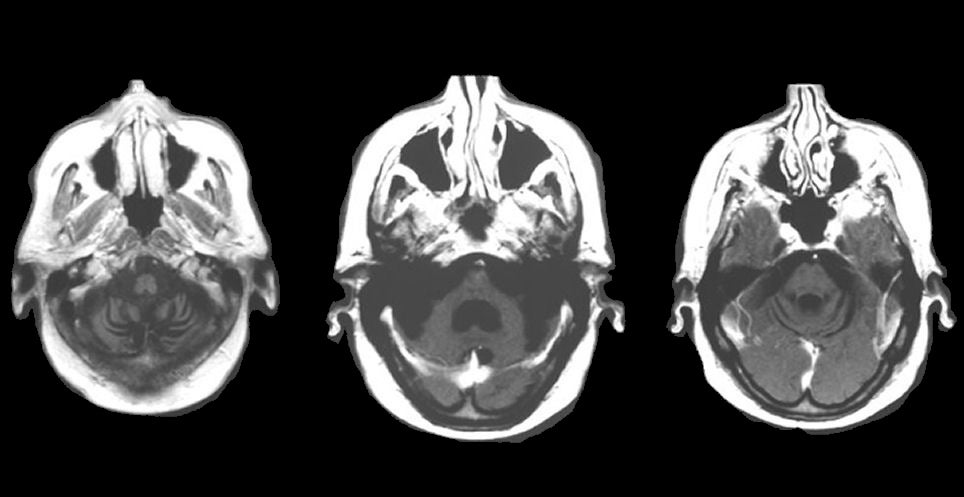
| A 33 year-old man presented with slowly progressive ataxia, slurred speech and nystagmus since childhood. |

![]()
![]()
![]()
| Spinocerebellar Ataxia (SCA): T1-weighted axial MRIs. Note the severe atrophy of the cerebellum and pons. These disorders, once termed olivopontocerebellar atrophy (OPCA), comprise a large group of genetic disorders characterized by progressive ataxia and brainstem signs. There are now over 25 spinocerebellar ataxias. Inheritance includes autosomal-dominant and autosomal-recessive forms. Some spinocerebellar ataxias are due to tri-nucleotide repeats (akin to Huntington's Disease and Myotonic Dystrophy). Other neurological findings may include specific eye movement abnormalities, optic atrophy, macular degeneration, peripheral neuropathy, extrapyramidal findings, seizures, and cognitive impairment. |
Revised
12/02/06
Copyrighted 2006. David C Preston